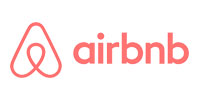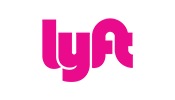Building the ideal architecture
for remote and hybrid work
At vero eos et accusamus et iusto odio dignissimos ducimus qui blanditiis praesentium voluptatum deleniti atque corrupti quos dolores et quas molestias excepturi sint occaecati cupiditate non provident, Similique Sunt in Culpa Qui Officia Deserunt Mollitia Cnimi, id est laborum et dolorum fuga. Et Harum Quidem Rerum Facilis Est Et expedita distinctio Nam libero tempore, cum soluta nobis.
Et harum quidem rerum facilis est et expedita distinctio. Nam libero tempore, cum soluta nobis est eligendi optio cumque nihil impedit quo minus id quod maxime placeat facere possimus, omnis voluptas assumenda est, omnis dolor repellendus. Temporibus autem quibusdam et aut officiis debitis aut rerum.
Nemo enim ipsam voluptatem quia voluptas sit aspernatur aut odit aut fugit, sed quia consequuntur magni dolores eos qui ratione voluptatem sequi nesciunt. Neque porro quisquam est, qui dolorem ipsum quia dolor sit amet, consectetur, adipisci velit, sed quia non numquam eius modi tempora incidunt ut labore et dolore magnam aliquam quaerat voluptatem. Ut enim ad minima veniam, quis nostrum exercitationem ullam. corporis.suscipit laboriosam, nisi ut aliquid ex ea commodi consequatur?
Excepteur sint est non
Quis Nostrud laboris Exercitation ullamco
Lorem ipsum dolor sit amet, consectetur adipiscing elit, sed do eiusmod tempor incididunt ut labore et dolore magna aliqua. Ut enim ad minim veniam, quis nostrud exercitation ullamco laboris nisi ut aliquip ex ea. commodo consequat. Duis aute irure dolor in reprehenderit in voluptate velit esse cillum dolore eu fugiat nulla pariatur. Excepteur sint occaecat cupidatat non proident, sunt in culpa qui officia deserunt mollit anim id est laborum.
At vero eos et accusamus et iusto odio dignissimos ducimus qui blanditiis praesentium voluptatum deleniti atque corrupti quos dolores et quas molestias excepturi sint occaecati cupiditate non provident, similique sunt. culpa qui officia deserunt mollitia animi, id est laborum et dolorum fuga. Et harum quidem rerum facilis est et expedita distinctio. Nam libero tempore, cum soluta nobis est eligendi optio cumque nihil impedit quo minus id quod maxime placeat facere possimus, omnis voluptas assumenda est, omnis dolor repellendus. Temporibus autem quibusdam et aut officiis debitis aut rerum necessitatibus saepe eveniet ut et voluptates repudiandae sint et molestiae non recusandae. Itaque earum rerum hic tenetur a sapiente delectus, ut aut reiciendis voluptatibus maiores alias consequatur aut perferendis doloribus asperiores repellat
- At vero eos et accusamus et iusto odio dignissimos
- Ducimus qui blanditiis praesentium voluptatum Deleniti
- atque corrupti quos dolores et quas Molestias excepturi
- sint occaecati cupiditate non Provident, similique
- sunt culpa qui officia deserunt Mollitia animi, id est laborum et dolorum fuga
100,000+ databases migrated to AWS 10,000+ data lakes and data warehouses deployed on AWS Hundreds of thousands of customers rely on AWS Databases
Why attend?
Increasing reliance on remote and hybrid work requires an evolution in the way we use technology to prevent risks while reducing costs.
Industry trends point to better ways to get work done and retain talent, with over 70% of the Global 2000 organizations deploying remote or hybrid-first work models by 2023.1 This puts pressure on IT, security, and human resources teams trying to build and manage infrastructure and onboard new hires based remotely all while providing secure access to propriety data without creating risk or exposure to bad actors.
At AWS End User Computing (EUC) Innovation Day 2022, you’ll learn how your organization can rearchitect its technology stack to strengthen security and reduce costs while enabling your employees to work from anywhere.
This event is ideal for anyone eager to learn more about:
- How to securely modernize your desktop and application delivery solutions to support a hybrid workforce
- How Amazon WorkSpaces, Amazon WorkSpaces Web, and Amazon AppStream 2.0 improve IT agility while keeping costs low
- How AWS End User Computing and AWS Partners provide tools that encourage employee innovation and increase productivity
Welcome and keynote address
- Join Adam Seligman, VP of Developer Experience, to learn how AWS is innovating to help developers and software teams to quickly get started and build without limits.
Accelerate web and mobile app development
Learn how AWS makes it easier to build, deploy, and host feature-rich web and mobile apps faster, and scale as your needs evolve.View sessions ›
Build, deploy, and host performant server-side rendered (SSR) apps in record time with AWS Amplify
Mike Jerome, Sr. Product Manager, AWS Amplify
Watch now
Deliver fast, performant, seamless, and unique web experiences by leveraging modern React frameworks like Next.js and AWS Amplify, a suite of tools that includes a fully managed CI/CD and hosting service. Learn how to automatically scale your web apps, serve content with low latency from the AWS content delivery network, and lower the cost of hosting. With Amplify, deploying a Next.js app requires zero-configuration and provides access to the breadth of 200+ AWS services, making it faster and easier than ever to create complete, feature-rich web experiences.- Create a cross-platform Flutter app with AWS Amplify, targeting iOS, Android, web, and desktop from a single codebase
Harshita Daddala, Sr. Product Manager, AWS Amplify
Watch now
Build performant, native-looking apps for multiple platforms such as Android, iOS, and web without the stress of maintaining different code bases. In this session, we’ll show you how to use AWS Amplify and Flutter Libraries to build feature-rich, cloud-powered apps without deep cloud expertise. Learn how to build an end-to-end cross-platform app and add features such as authentication, API and data interactions, and media/file storage. -
AWS Community Spotlight: AWS Amplify
Jones Zachariah Noel N, AWS Serverless Hero
Watch now -
Build a fullstack, fully typed app with GraphQL and AWS AppSync
Michael Liendo, Sr. Developer Advocate, Frontend Web & Mobile
Watch now
Developers love GraphQL for its fully typed schema, self-documenting APIs and less data fetching friction – but self-managing GraphQL is complex. AWS AppSync, a fully managed, serverless GraphQL service allows developers to have a Typescript-based app development experience, with limitless production scalability. Join this session to learn how to build an end-to-end Typescript-based, fullstack application using AWS AppSync, Next.js, Amplify Libraries and CDK. - Build a real-time multiplayer gaming app with AWS Amplify and AWS AppSync
Stefano Sandrini, Sr. Manager, Solutions Architecture
Watch now
Differentiated user experiences such as real-time interactions lead to higher user engagement. In this session we will show how to build an online, real-time multiplayer trivia application quickly. In addition to game management, we will demonstrate how to build real-time capabilities such as player scoring and leader boards, and game state updates. You will learn how to use AWS Amplify to connect your frontend to a sophisticated backend with GraphQL APIs, leveraging subscriptions to deliver real-time data to users. -
AWS Community Spotlight: AWS Application Composer
Danielle Heberling, AWS Community Builder
Watch now
Build software faster, using the tools you love
Learn how AWS makes it easier to build and ship high quality apps faster with modern infrastructure, DevOps, and generative AI-enabled tools that make it easier to author code faster.View sessions ›
- Keynote: Level Up Your Team
Harry Mower, Director, AWS DevOps Services
Doug Clauson, Principal Product Manager, Technical, AWS DevOps Services
Watch now
Learn how AWS’s best-in-class DevOps tools and practices can help your team and business achieve its biggest goals, together. - Spark a faster planning, development, and delivery lifecycle with Amazon CodeCatalyst
Doug Clauson, Principal Product Manager, Technical, AWS DevOps Services
Kyle Seaman, Sr. Product Manager, Technical, AWS DevOps Services
Watch now
Amazon CodeCatalyst is a new service on AWS that brings together everything software development teams need to plan, code, build, test and deploy applications on AWS. In this session, we’ll walk through the main components of CodeCatalyst. First, we’ll show how you can use blueprints to set up a new software project that includes example code and pre-integrated git, CI/CD workflows, and team collaboration tooling. Then, we’ll show how CodeCatalyst dev environments enable collaborators to access a complete version of your project, created from a new git branch, that they can access from their IDE. -
Amazon CodeCatalyst in real-time: Deploying a static docs page to production in minutes using a blueprint
Brian Beach, Tech Leader, AWS DevOps
Ryan Bachman, Senior Specialist Solutions Architect, AWS DevOps
Watch now
You’ve built and deployed your first app on Amazon CodeCatalyst – great! But now your users are hungry for technical details and you need a docs page, stat. Join this session to see how you can use CodeCatalyst to build a production-ready website that is set up for long-term success. We will create the project in real time, add collaborators to populate content, and deploy a site that you can access online – all in under a half an hour. -
AWS Community Spotlight: Amazon CodeCatalyst
Johannes Koch, AWS Dev Tools Community Builder
Watch now -
Infrastructure as (first-class) Code: Automate your development lifecycle with Amazon Code Catalyst and AWS Cloud Development Kit
Ryan Bachman, Senior Specialist Solutions Architect, AWS DevOps
Sirirat Kongdee, Senior SA, Federal, AWS
Watch now
Explore AWS Cloud Development Kit (AWS CDK) constructs, and learn how they can make it easier to build applications on AWS. See Amazon CodeCatalyst and AWS CDK together in action in a demo that shows how to use a CodeCatalyst dev environment to build a CDK construct, how to automate the publication of that construct in multiple languages with a CodeCatalyst CI/CD workflow, and how to use the construct in a new CodeCatalyst project to deploy an application. -
Team up without the friction: Collaborating on your apps with Amazon CodeCatalyst
Adnan Bilwani, Sr. Specialist, AWS Builder Experience
Leo Zhadanovsky, AWS Chief Technologist Education, PS
Watch now
Amazon CodeCatalyst makes it easy to build software as a team. You can use familiar agile project management workflows and quickly organize your work as collaborators join your project. Watch this session to see how CodeCatalyst enables anyone on your team to access a software project's entire set of resources and history, replicate environments, and access any action or artifact. -
AWS CDK Foundations: Learn how to discover, resuse, and share CDK constructs, and connect with the open source community
Kendra Neil, Software Developer Engineer, AWS Infrastructure as Code
Watch now
Learn all about AWS CDK's community-contributed constructs, which are reusable and shareable open-source cloud components that can help you build apps more quickly and easily. Watch an expert demo best practices, and learn how to become a community contributor yourself. -
Increasing developer productivity with generative AI: An introduction to Amazon CodeWhisperer
Brooke Jamieson, Senior Developer Advocate
Watch now
Learn about Amazon CodeWhisperer and how it can help you accelerate your application development while freeing you up to be innovative, build differentiating capabilities, and solve business critical problems. We will demo Amazon CodeWhisperer and show how code suggestions across varying languages and IDEs make you and your team more productive. -
AWS Community Spotlight: Amazon CodeWhisperer
Brian Tarbox, AWS Community Hero
Watch now
Bringing it all together
Hear from AWS leadership on key topics, services, and messages from the day.View sessions ›
- Demystifying generative AI and the future of software development with AWS CTO, Werner Vogels
Watch now
Join Werner Vogels and a panel of experts to hear about the latest trends in generative AI and what it means for developers. How is development going to change? What is it going to mean to be a developer and what skills will be most important? Hear the panel weigh in on these topics and more. - The New Stack interview: Building software without limits
Watch now
Alex Williams, Founder and Editor-in-Chief of The New Stack will lead a discussion with Harry Mower, Director of AWS DevOps Services and Doug Seven, Director of Software Development, Amazon CodeWhisperer, around developer and team productivity trends and what makes AWS a special place for builders. -
Bringing it all together: Best practices and key takeaways
Watch now
Jeff Barr, VP of AWS Evangelism will share a recap of key stories, announcements, and moments from the day.
Event Agenda
- Track2 Session 1
- Track3 Session 1
- Track4 Session 1
- Track5 Session 1
- Track6 Session 1
- Track7 Session 1
- Track8 Session 1
- Track9 Session 1
- Track10 Session 1
8:00 AM – 10:00 AM PT | 11:00 AM - 1:00 PM ET
Lab: Microservice Extractor for .NET
Level: 300
Description: AWS Microservice Extractor for .NET simplifies the process of refactoring applications into independent services. Modernize and transform your applications with an assistive tool that analyzes source code and runtime metrics to create a visual representation of your application and its dependencies. AWS Microservice Extractor for .NET delivers a holistic visualization of applications and assists in code refactoring and extraction of the codebase into separate code projects that teams can develop, build, and operate independently to improve agility, uptime, and scalability.
• This workshop will guide you through a step-by-step process of extracting an independent service from a monolithic ASP.NET application.
• You will use AWS Microservice Extractor to visualize, group and extract parts of the monolith as a separate service.
• The workshop expects that participants have an introductory knowledge of C# and Visual Studio.
Presenters:
• Craig Bossie, Senior Microsoft Specialist Solutions Architect, AWS
• Runeet Vashisht, Senior Solutions Architect, Microsoft Workloads, AWS
10:00 AM – 11:00 AM PT | 1:00 PM - 2:00 PM ET
Presentation: Plan, Migrate and Modernize your Microsoft Workloads on AWS
Level: 300
Description: Customers have been running their Microsoft workloads on AWS for over 12 years, longer than any other cloud provider. Today, over 300,000 customers trust AWS with their Microsoft workloads. Over the years, AWS programs have helped our customers achieve substantial business benefit by providing an approach and investments to accelerate, reduce risks, and offset costs when migrating workloads to AWS. In this session, we’ll overview the typical journey Windows workloads take when moving to AWS; including the planning, tooling, and guidance that AWS can provide.
Presenter:
• Eric Cyffka, EC2 Windows Migration & Modernization Programs Manager, AWS
8:00 AM – 10:00 AM PT | 11:00 AM - 1:00 PM ET
Lab: Microservice Extractor for .NET
Level: 300
Description: AWS Microservice Extractor for .NET simplifies the process of refactoring applications into independent services. Modernize and transform your applications with an assistive tool that analyzes source code and runtime metrics to create a visual representation of your application and its dependencies. AWS Microservice Extractor for .NET delivers a holistic visualization of applications and assists in code refactoring and extraction of the codebase into separate code projects that teams can develop, build, and operate independently to improve agility, uptime, and scalability.
• This workshop will guide you through a step-by-step process of extracting an independent service from a monolithic ASP.NET application.
• You will use AWS Microservice Extractor to visualize, group and extract parts of the monolith as a separate service.
• The workshop expects that participants have an introductory knowledge of C# and Visual Studio.
Presenters:
• Craig Bossie, Senior Microsoft Specialist Solutions Architect, AWS
• Runeet Vashisht, Senior Solutions Architect, Microsoft Workloads, AWS
10:00 AM – 11:00 AM PT | 1:00 PM - 2:00 PM ET
Presentation: Plan, Migrate and Modernize your Microsoft Workloads on AWS
Level: 300
Description: Customers have been running their Microsoft workloads on AWS for over 12 years, longer than any other cloud provider. Today, over 300,000 customers trust AWS with their Microsoft workloads. Over the years, AWS programs have helped our customers achieve substantial business benefit by providing an approach and investments to accelerate, reduce risks, and offset costs when migrating workloads to AWS. In this session, we’ll overview the typical journey Windows workloads take when moving to AWS; including the planning, tooling, and guidance that AWS can provide.
Presenter:
• Eric Cyffka, EC2 Windows Migration & Modernization Programs Manager, AWS
8:00 AM – 10:00 AM PT | 11:00 AM - 1:00 PM ET
Lab: Microservice Extractor for .NET
Level: 300
Description: AWS Microservice Extractor for .NET simplifies the process of refactoring applications into independent services. Modernize and transform your applications with an assistive tool that analyzes source code and runtime metrics to create a visual representation of your application and its dependencies. AWS Microservice Extractor for .NET delivers a holistic visualization of applications and assists in code refactoring and extraction of the codebase into separate code projects that teams can develop, build, and operate independently to improve agility, uptime, and scalability.
• This workshop will guide you through a step-by-step process of extracting an independent service from a monolithic ASP.NET application.
• You will use AWS Microservice Extractor to visualize, group and extract parts of the monolith as a separate service.
• The workshop expects that participants have an introductory knowledge of C# and Visual Studio.
Presenters:
• Craig Bossie, Senior Microsoft Specialist Solutions Architect, AWS
• Runeet Vashisht, Senior Solutions Architect, Microsoft Workloads, AWS
10:00 AM – 11:00 AM PT | 1:00 PM - 2:00 PM ET
Presentation: Plan, Migrate and Modernize your Microsoft Workloads on AWS
Level: 300
Description: Customers have been running their Microsoft workloads on AWS for over 12 years, longer than any other cloud provider. Today, over 300,000 customers trust AWS with their Microsoft workloads. Over the years, AWS programs have helped our customers achieve substantial business benefit by providing an approach and investments to accelerate, reduce risks, and offset costs when migrating workloads to AWS. In this session, we’ll overview the typical journey Windows workloads take when moving to AWS; including the planning, tooling, and guidance that AWS can provide.
Presenter:
• Eric Cyffka, EC2 Windows Migration & Modernization Programs Manager, AWS
Track2 Session 1
Migrate your Oracle and SQL Server databases to
Organizations today are looking to free themselves from the constraints of on-premises databases and leverage the power of fully managed databases in the cloud. Amazon RDS is a fully managed relational database service that you can use to run your choice of database engines including open source engines, Oracle, and SQL Server in the cloud. Amazon RDS automates time-consuming database administration tasks and adds capabilities such as replication and Multi-AZ failover to make your database deployments more scalable, available, reliable, manageable, and cost-effective. This session covers why you should consider moving your on-premises Oracle & SQL Server deployments to Amazon RDS and the tools to get started.
Track3 Session 1
Tab 3 content
Nulla eleifend felis vitae velit tristique imperdiet. Etiam nec imperdiet elit. Pellentesque sem lorem, scelerisque sed facilisis sed, vestibulum sit amet eros.
Track4 Session 1
Tab 4 content
Integer ultrices lacus sit amet lorem viverra consequat. Vivamus lacinia interdum sapien non faucibus. Maecenas bibendum, lectus at ultrices viverra, elit magna egestas magna, a adipiscing mauris justo nec eros.
Track5 Session 1
Tab 5 content
Nulla eleifend felis vitae velit tristique imperdiet. Etiam nec imperdiet elit. Pellentesque sem lorem, scelerisque sed facilisis sed, vestibulum sit amet eros.
Track6 Session 1
Tab 6 content
Integer ultrices lacus sit amet lorem viverra consequat. Vivamus lacinia interdum sapien non faucibus. Maecenas bibendum, lectus at ultrices viverra, elit magna egestas magna, a adipiscing mauris justo nec eros.
Track7 Session 1
Tab 7 content
Organizations today are looking to free themselves from the constraints of on-premises databases and leverage the power of fully managed databases in the cloud. Amazon RDS is a fully managed relational database service that you can use to run your choice of database engines including open source engines, Oracle, and SQL Server in the cloud. Amazon RDS automates time-consuming database administration tasks and adds capabilities such as replication and Multi-AZ failover to make your database deployments more scalable, available, reliable, manageable, and cost-effective. This session covers why you should consider moving your on-premises Oracle & SQL Server deployments to Amazon RDS and the tools to get started.
Track8 Session 1
Tab 8 content
Organizations today are looking to free themselves from the constraints of on-premises databases and leverage the power of fully managed databases in the cloud. Amazon RDS is a fully managed relational database service that you can use to run your choice of database engines including open source engines, Oracle, and SQL Server in the cloud. Amazon RDS automates time-consuming database administration tasks and adds capabilities such as replication and Multi-AZ failover to make your database deployments more scalable, available, reliable, manageable, and cost-effective. This session covers why you should consider moving your on-premises Oracle & SQL Server deployments to Amazon RDS and the tools to get started.
Track9 Session 1
Tab 9 content
Organizations today are looking to free themselves from the constraints of on-premises databases and leverage the power of fully managed databases in the cloud. Amazon RDS is a fully managed relational database service that you can use to run your choice of database engines including open source engines, Oracle, and SQL Server in the cloud. Amazon RDS automates time-consuming database administration tasks and adds capabilities such as replication and Multi-AZ failover to make your database deployments more scalable, available, reliable, manageable, and cost-effective. This session covers why you should consider moving your on-premises Oracle & SQL Server deployments to Amazon RDS and the tools to get started.
Track10 Session 1
Tab 10 content
Organizations today are looking to free themselves from the constraints of on-premises databases and leverage the power of fully managed databases in the cloud. Amazon RDS is a fully managed relational database service that you can use to run your choice of database engines including open source engines, Oracle, and SQL Server in the cloud. Amazon RDS automates time-consuming database administration tasks and adds capabilities such as replication and Multi-AZ failover to make your database deployments more scalable, available, reliable, manageable, and cost-effective. This session covers why you should consider moving your on-premises Oracle & SQL Server deployments to Amazon RDS and the tools to get started.
Multiple City Registration
-
JAN 21 2020Sunt in Culpa

-
JAN 21 2020Sunt in Culpa

-
JAN 21 2020Sunt in Culpa

-
JAN 21 2020Sunt in Culpa

-
JAN 21 2020Sunt in Culpa

-
JAN 21 2020Sunt in Culpa

-
JAN 21 2020Sunt in Culpa

-
JAN 21 2020Sunt in Culpa

-
JAN 21 2020Sunt in Culpa

-
JAN 21 2020Sunt in Culpa

-
JAN 21 2020Sunt in Culpa

-
JAN 21 2020Sunt in Culpa

-
JAN 21 2020Sunt in Culpa

-
JAN 21 2020Sunt in Culpa

-
JAN 21 2020Sunt in Culpa

Sessions will focus on providing an overview of AWS services and features, with the assumption that attendees are new to the topic Sessions will focus on providing an overview of AWS services and features, with the assumption that attendees are new to the topic Sessions will focus on providing an overview of AWS services and features, with the assumption that attendees are new to the topic Sessions will focus on providing an overview of AWS services and features, with the assumption that attendees are new to the topic
Session Proficiency Levels Explained
-
Level 100
Introductory
Sessions will focus on providing an overview of AWS services and features, with the assumption that attendees are new to the topic
-
Level 200
Intermediate
Sessions will focus on providing best practices, details of service features and demos with the assumption that attendees have introductory knowledge of the topics
-
Level 300
Advanced
Sessions will dive deeper into the selected topic. Presenters assume that the audience has some familiarity with the topic, but may or may not have direct experience implementing a similar solution
-
Level 400
Expert
Sessions are for attendees who are deeply familiar with the topic, have implemented a solution on their own already, and are comfortable with how the technology works across multiple services, architectures, and implementations
Quis Nostrud Exercitation
Over the past 20 years, Amazon has delivered many world firsts designed to break down barriers across each step of the machine learning (ML) lifecycle including the launch of Amazon SageMaker in 2017. Today, customers can prepare data and build, train, and deploy ML models for any use case using fully managed infrastructure, tools, workflows, AutoML, and no-code capabilities. They can also use AI services to improve business outcomes with ready-made intelligence for applications and workflows based on the same technology used to power Amazon’s own businesses. From startups to enterprise, customers are using AWS to harness the power of data with machine learning and, in many cases, changing the way we live for the better by launching ML applications to support sustainability and accessibility worldwide.
AWS is hosting a celebration on October 25, 2022 to toast key AI/ML milestones over the past 20 years. Hear stories from customers including Inspire, Mueller Water Products, ResMed, and Siemens Energy who show what’s possible using ML especially for sustainability and accessibility challenges.
Also hear from special guest, Professor Michael Jordan, who will talk about the decision-making side of machine learning spanning computational, inferential and economic perspectives.
Be among the first 1,500 people to sign up for the virtual celebration on October 25, 2022 <Tabatha to add link – do we advertise that it will be on all the streaming channels? > and received $25.00 of AWS credits.
Excepteur Sint Occaecat Cupidatat
Lorem ipsum dolor sit amet, consectetur adipiscing elit, sed do eiusmod tempor incididunt ut labore et dolore magna aliqua. Ut enim ad minim veniam, quis nostrud exercitation ullamco laboris nisi ut aliquip ex ea commodo consequat. Duis aute irure dolor in reprehenderit in voluptate velit esse cillum dolore eu fugiat nulla pariatur. Excepteur sint occaecat cupidatat non proident, sunt in culpa qui officia deserunt mollit anim id est laborum.
About the event
Developer Innovation Day is designed to help developers and teams be productive and collaborate from discovery, to delivery, to running software and building applications.
Get a first look at exciting product updates, technical deep dives, and keynotes. Discover how the breadth and depth of AWS tools and the right practices can harness your team's ability to find success and take opportunities from ideas to impact.
Learn about the latest tools and services
Hear AWS's vision for the future of developer productivity and DevOps and learn about the latest tools and services.
Master complexity through collaboration
Discover how to work more closely across your team with code-driven demos and community-led sessions.
Discover new ways to improve your software lifecycle
Get first access to exciting service announcements that help any team build world-class applications.
Innovate with industry experts
Connect with technical experts, enthusiasts, and emerging thought leaders who can help you get started.
Who should watch
The event is ideal for anyone who is eager to learn more about:
- How the best companies, application developers, and startups are using AWS tools to accelerate productivity and transform their business.
- How AWS and businesses are using machine learning and AI to build exciting solutions to address current software challenges.
- How to connect with the AWS community, get access to technical resources, mentorship, networking and knowledge sharing opportunities, and more.
Featured Speakers
-

Dr. Werner Vogels,
Chief Technology Officer, AmazonDr. Werner Vogels is responsible for driving AWS's customer-centric technology vision. As one of the forces behind Amazon’s approach to cloud computing, he is passionate about helping young businesses reach global scale, and transforming enterprises into fast-moving digital organizations. He joined Amazon in 2004 from Cornell University, where he was a distributed systems researcher. He has held technology leadership positions in companies that handle the transition of academic technology into industry. Vogels holds a PhD from the Vrije Universiteit in Amsterdam and has authored many articles on distributed systems technologies for enterprise computing.
-

Adam Seligman,
Vice President of Developer Experience, AWSAdam Seligman leads the teams that make it easier for developers to build and deploy applications on AWS. With over 20 years of experience in the tech industry, Adam has held leadership positions at Salesforce, Google, and Microsoft. He is passionate about democratizing technology and believes that every developer should have access to the same powerful tools and resources regardless of their background or experience level. Adam is a graduate of the Williams College and the University of Texas in Texas. He also holds an MBA from the Wharton School of Business.
-

Richard Boyd, Cloud Data Engineer, iRobot
Richard Boyd is a cloud data engineer with the iRobot Corporation’s Cloud Data Platform where he builds tools and services to support the world’s most beloved vacuum cleaner. Before joining iRobot, Richard built discrete event simulators for Amazon’s automated fulfillment centers in Amazon Robotics. His previous roles include cyber warfare systems analyst at MIT and research for the Center for Army Analysis. He holds advanced degrees in Applied Mathematics & Statistics.
-

Raju Gulabani, VP of Databases, Analytics & AI, AWS
Raju Gulabani is VP of Databases, Analytics & AI within AWS at Amazon.com. He is responsible for P&<, product management, engineering and operations for Database services such as Amazon Aurora and Amazon DynamoDB, and Analytics services such as Amazon Redshift and Amazon EMR, as well as AI services like Amazon Lex, Amazon Polly, and Amazon Rekognition. Prior to joining Amazon in his current position in 2010, Raju spent four years at Google and built the Google Apps business (now known as G Suite).Earlier in his career, Raju founded an Intel backed Wi-Fi Voice over IP company as well as held engineering management positions at Microsoft.
-

Ryan Kelly, Data Architect, Equinox
Ryan Kelly is a data architect at Equinox, where he helps outline and implement frameworks for data initiatives. He also leads clickstream tracking which helps aid teams with insights on their digital initiatives. Ryan loves making it easier for people to reach and ingest their data for the purposes of business intelligence, analytics, and product/service enrichment. He also loves exploring and vetting new technologies to see how they can enhance what they do at Equinox
-

Richard Boyd, Cloud Data Engineer, iRobot
Richard Boyd is a cloud data engineer with the iRobot Corporation’s Cloud Data Platform where he builds tools and services to support the world’s most beloved vacuum cleaner. Before joining iRobot, Richard built discrete event simulators for Amazon’s automated fulfillment centers in Amazon Robotics. His previous roles include cyber warfare systems analyst at MIT and research for the Center for Army Analysis. He holds advanced degrees in Applied Mathematics & Statistics.
-

Raju Gulabani, VP of Databases, Analytics & AI, AWS
Raju Gulabani is VP of Databases, Analytics & AI within AWS at Amazon.com. He is responsible for P&<, product management, engineering and operations for Database services such as Amazon Aurora and Amazon DynamoDB, and Analytics services such as Amazon Redshift and Amazon EMR, as well as AI services like Amazon Lex, Amazon Polly, and Amazon Rekognition. Prior to joining Amazon in his current position in 2010, Raju spent four years at Google and built the Google Apps business (now known as G Suite).Earlier in his career, Raju founded an Intel backed Wi-Fi Voice over IP company as well as held engineering management positions at Microsoft.
-

Ryan Kelly, Data Architect, Equinox
Ryan Kelly is a data architect at Equinox, where he helps outline and implement frameworks for data initiatives. He also leads clickstream tracking which helps aid teams with insights on their digital initiatives. Ryan loves making it easier for people to reach and ingest their data for the purposes of business intelligence, analytics, and product/service enrichment. He also loves exploring and vetting new technologies to see how they can enhance what they do at Equinox
-

Richard Boyd, Cloud Data Engineer, iRobot
Richard Boyd is a cloud data engineer with the iRobot Corporation’s Cloud Data Platform where he builds tools and services to support the world’s most beloved vacuum cleaner. Before joining iRobot, Richard built discrete event simulators for Amazon’s automated fulfillment centers in Amazon Robotics. His previous roles include cyber warfare systems analyst at MIT and research for the Center for Army Analysis. He holds advanced degrees in Applied Mathematics & Statistics.
-

Raju Gulabani, VP of Databases, Analytics & AI, AWS
Raju Gulabani is VP of Databases, Analytics & AI within AWS at Amazon.com. He is responsible for P&<, product management, engineering and operations for Database services such as Amazon Aurora and Amazon DynamoDB, and Analytics services such as Amazon Redshift and Amazon EMR, as well as AI services like Amazon Lex, Amazon Polly, and Amazon Rekognition. Prior to joining Amazon in his current position in 2010, Raju spent four years at Google and built the Google Apps business (now known as G Suite).Earlier in his career, Raju founded an Intel backed Wi-Fi Voice over IP company as well as held engineering management positions at Microsoft.
-

Ryan Kelly, Data Architect, Equinox
Ryan Kelly is a data architect at Equinox, where he helps outline and implement frameworks for data initiatives. He also leads clickstream tracking which helps aid teams with insights on their digital initiatives. Ryan loves making it easier for people to reach and ingest their data for the purposes of business intelligence, analytics, and product/service enrichment. He also loves exploring and vetting new technologies to see how they can enhance what they do at Equinox
-

Richard Boyd, Cloud Data Engineer, iRobot
Richard Boyd is a cloud data engineer with the iRobot Corporation’s Cloud Data Platform where he builds tools and services to support the world’s most beloved vacuum cleaner. Before joining iRobot, Richard built discrete event simulators for Amazon’s automated fulfillment centers in Amazon Robotics. His previous roles include cyber warfare systems analyst at MIT and research for the Center for Army Analysis. He holds advanced degrees in Applied Mathematics & Statistics.
Customer Highlights

Epics Games’ entire analytics platform runs on AWS. Billions of game events, like player interactions on the map, their accuracy, damage taken and dealt, and what resources they are using are all sent to AWS.

Epics Games’ entire analytics platform runs on AWS. Billions of game events, like player interactions on the map, their accuracy, damage taken and dealt, and what resources they are using are all sent to AWS.

Epics Games’ entire analytics platform runs on AWS. Billions of game events, like player interactions on the map, their accuracy, damage taken and dealt, and what resources they are using are all sent to AWS.

Epics Games’ entire analytics platform runs on AWS. Billions of game events, like player interactions on the map, their accuracy, damage taken and dealt, and what resources they are using are all sent to AWS.
Frequently asked questions
Can I watch Developer Innovation Day on demand?
Yes, session and keynote recordings are available on YouTube.
Who should attend this event?
Builders and teams interested in discovering the solutions, skills, and ideas to transform how developers code, and how teams collaborate, power digital transformation, and drive cultural change.
Is there a cost to attend?
There is no cost to attend this event.
What are the prerequisites before attending the event?
There are no prerequisites for attending the event. We encourage attendees to browse the DevOps, Developer Tools and Frontend Web & Mobile pages on the AWS website to get a brief overview of the available services. Key services covered during the event are: AWS Amplify, AWS AppSync, Amazon CodeCatalyst, Amazon CodeWhisperer and AWS CDK.